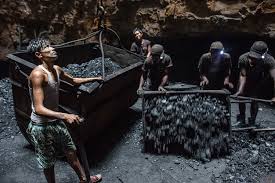Here is why the steel industry dreads RCEP

Money Control - 16 September 2019
Here is why the steel industry dreads RCEP
Countries that have free trade agreements with India account for more than half of the steel imports. The RCEP will further open the floodgates.
Steel companies, already reeling under a demand slump, will be against another stumbling block in the form of the proposed RCEP trade agreement.
Industry players fear that the RCEP, which stands for Regional Comprehensive Economic Partnership, will make the domestic markets even more vulnerable to imports, especially from China.
The country, which is also part of RCEP, is sitting on a surplus of about 300 million tonnes of steel. And after facing sanctions and blocks in other major markets, including the US and Europe, China is looking at the Indian market, which despite the current slowdown, is still among the faster growing ones globally.
"Steel imports from countries with whom India has free trade agreements, jumped 71 percent year-on-year, in August. It is even more alarming that the share of these FTA-partners in the overall imports increased to 77 percent in August this year, from 54 percent in the same month last year," points out Jayant Acharya, Director (commercial & marketing), JSW Steel.
The industry fears that these imports, and the share of zero-duty segment, will further jump, if RCEP comes into effect.
"India’s one-sided trade with FTA-partners has particularly impacted the steel sector, which is extremely capital intensive and requires sustained performance to recover its investment and carry out expansion activities in-line with the growing demand," said Acharya.
"The current slowdown along with elevated imports have made the circumstances very difficult for the steel sector. We welcome the proposed changes in Government’s policy to boost exports, but there is a lot of work-in-progress on trade-policy for keeping imports in-check," he added.
The trade agreement
The RCEP, which may come into effect from November, will allow its 16 member countries to freely trade goods in each others markets without any tariff barriers. It includes 10 members of the ASEAN, and six free trade partners, including China, Japan and South Korea.
Japan and South Korea are already among the major importers. In some of the months of this year, more than half of the steel imports originated from these two countries. In April for instance, imports from Japan and South Korea made up for 57 percent of the monthly volume.
"With a free trade agreement, we may not benefit much, as these countries are much more technologically advanced than us, and can put up several kinds of non-tariff barriers," pointed out a senior executive from the industry.
Slowing demand
The slowing demand in the domestic market has already seen production coming down. JSW Steel’s production was down 13 percent in August.
The company, along with peers like Tata Steel, also reported subdued numbers in the first quarter of the financial year. While JSW Steel’s net profit fell 57 percent in the June quarter, that of Tata Steel plummeted by nearly 65 percent.
The outlook for the rest of the year, under present circumstances, looks equally bleak. Earlier this month, India Ratings and Research (Ind-Ra), lowered steel sector’s demand growth to 4 percent, from the earlier expectation of 7 percent.
It revised the outlook for the steel sector to stable-to-negative from stable for the remaining part of the financial year.
Two of the industry’s biggest clients - infrastructure and auto companies - are facing fresh challenges. While sale numbers of auto companies dropped the most in 20 years, in August, the order pipeline from the infrastructure sector has almost dried up.
Imports from RCEP countries will further squeeze the steelmakers.





